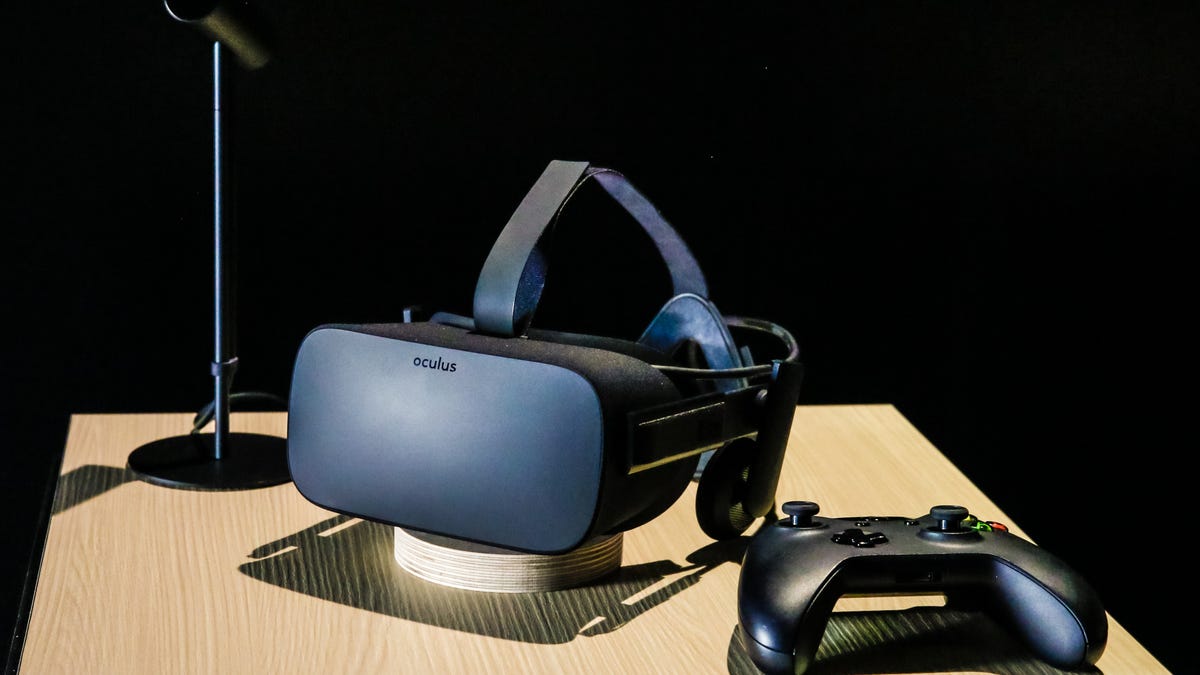Explained: How the Oculus Rift streams PC and Xbox One games
The Oculus Rift can stream games from both a PC and an Xbox One, but it's not what you may think.

Oculus Rift is arguably one of the most exciting products of the year. The Facebook-owned virtual-reality company unveiled the consumer version of its VR headset on Thursday alongside a slew of new titles that will arrive with it in the first quarter of 2016. The company also announced a surprising partnership with Microsoft. The Rift will come bundled with an Xbox One controller and can even stream Xbox One games.
But the breakdown between the PC and Xbox aspects of the Oculus Rift is a bit confusing -- so much so that we wanted to help explain exactly what's going on.
Oculus Rift: A virtual screen for your PC
It's important to start specifying what the Oculus Rift is and isn't. The Rift is a virtual-reality headset, yes, but note that it's a PC accessory, not a standalone device. Think of it as twin monitors that are strapped to your head, reacting to your motion in real time.
In addition to the high-tech headset, the Oculus Rift package comes with that aforementioned Xbox One controller, an Xbox wireless adapter (so the controller can interface with the PC) and a special motion sensor (a desk-mounted tracking device to follow the headset's movements, and change the first-person point-of-view accordingly).
The headset, tracker, and controller dongle are all tethered to your Windows PC (via USB and HDMI), and that PC is running an Oculus app to tie things together. With all that in place, you're good to go and have two ways to play: dedicated Oculus games (running on the PC) or streaming Xbox One games (from an Xbox console elsewhere on your home network, streaming to the PC).
Playing Oculus games on a PC
Oculus has its own app store, the company's Steam-like platform that will be home to compatible Rift games. It's a dashboard from which you can interact with friends, learn more about games, buy them and play them. Once you purchase and download a game -- say, the space fighter sim Eve Valkyrie -- you boot it up, and it's off to intergalactic dogfighting.
Again, to be clear: the Oculus games are running on the PC itself, and you're viewing the experience through the Oculus headset while controlling it via the Xbox controller. (Oculus also unveiled more radical controllers called Oculus Touch that will debut later; they can be used with compatible games in lieu of the Xbox gamepad.)
Streaming games from an Xbox One
The second gaming option is having the ability to stream from an Xbox One. Microsoft previously revealed that Windows 10 users will be able to stream games from their Xbox One to a PC. This capability is essentially Microsoft's answer to Sony's sophisticated PlayStation Now service (playing cloud-based PS3 games on compatible TVs, Blu-ray players and consoles), its PS4 Remote Play (which allows PlayStation Vita and Sony Xperia phone owners to stream PlayStation 4 games to their portable devices), and Nvidia's Grid service (which streams PC games to Nvidia's Shield Tablet and Shield microconsole ).
So, while all
users (with strong enough hardware) will be able to stream their Xbox One games to their PC, Oculus owners will then have the extra ability of being able to view those games in the headset instead of on their PC screen. Keep in mind, however, that these streamed Xbox One games won't have the same immersion as native Oculus VR games. From what we saw at the Oculus press event, Xbox One games will be played on the Rift in a "virtual living room."Why play your Xbox in a virtual living room elsewhere in your home -- instead of your actual living room? We can imagine, for instance, the home's big-screen TV being monopolized for watching a hockey game or a kids' show, while you still get to play Halo 5 multiplayer. (Non-Oculus owners, of course, can do the same thing right on their PC screen, sans the trappings of the virtual living room.)
PC requirements
Oculus previously announced that, in order to use the Rift, you would need a pretty good gaming computer. The company recommends a computer equipped with an Intel Core i5 4590 or better processor with 8GB or more of RAM. It must also have two USB 3.0 ports and an HDMI port that supports HDMI 1.3 video output. The steepest and most expensive requirement is the graphics card. Oculus recommends having at least an Nvidia GTX 970 or AMD 290 graphics card, both which can retail for upward of $300 (as of June 2015).
While the Oculus Rift does support Windows 7, you will need to have Windows 10 installed to take advantage of both the Xbox One game streaming and to use the controller. This is because of the Xbox wireless adapter, which is only compatible with -- you guessed it -- Windows 10.
You won't need to pay extra for Windows 10, though. Microsoft is offering Windows 10 for free to owners of Windows 7, Windows 8 and Windows 8.1 who upgrade within the first year.
Oculus hasn't announced pricing details just yet, although company executives hinted last month that it may cost around $1,500 when bundled with a PC. The Oculus Rift will be available in the first quarter of 2016.
Editors' note: This story has been updated since its original publication with additional context and clarification.

